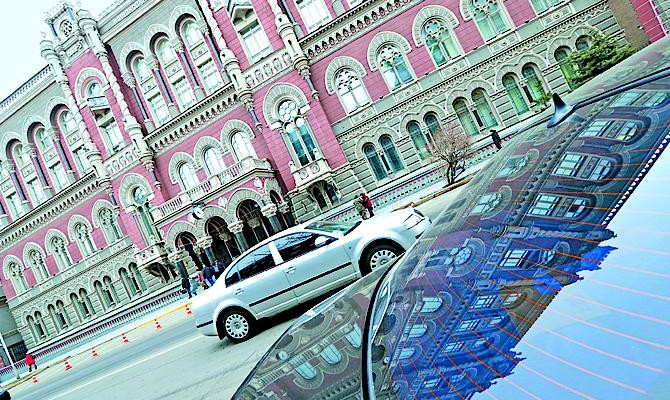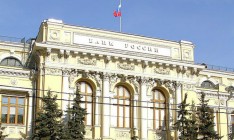Finance
banksUkraine’s banking system is on the verge of collapse

This year the Ukrainian banking system run up against several challenges: the rise in indebtedness, devaluation, the outflow of deposits, the mass withdrawal of banks from the market and the losses of assets in the ATO zone and Crimea. The shortage of liquidity is the most pressing issue that banks must resolve in the nearest future.
A drain of consciousness
In the period January – November, clients withdrew UAH 60 bn from their hryvnia deposit accounts and US $90 bn from their hard currency accounts. This is the equivalent of 14% and 30% of the total volume of deposits. In other words, customers are mainly withdrawing their hard currency from the banking system. Bankers say that upstanding clients that fear the risks in the country are withdrawing their deposits.
While people are still depositing hryvnia in bank accounts, they fear depositing hard currency because the National Bank of Ukraine set a limit of withdrawal of hard currency deposits (UAH 15,000 per day) after the term expires. Premature withdrawals can only be made in hryvnia. As long as the national currency is devaluating every day, nobody wants to risk saving hard currency in banks.
Customers are not the only ones suffering from devaluation whose savings are losing value every day. Banks are also suffering from this trend. Their hard currency obligations are steadily growing. On December 1 the share of hard currency deposits was 47% compared to 37% at the beginning of the year with a 30% outflow of hard currency deposits.
The situation with loans is similar. Banks are no longer offering loans in hard currency – in January – November banks reduced their loan portfolios in hard currency by US $7 bn, but the share of hard currency loans is growing due to devaluation. While at the beginning of the year the share was 34%, as of December 1 it was 50%.
This means that it is becoming more difficult for borrowers to pay back their loans to banks. “If we take a look at the extension of debt repayments, major allowances are given to legal entities. Only the official allowance for hard currency loans is around 14%,” says Head of the Analytical Department of Alfa-Bank Oleksiy Blinov. Unofficial statistics of overdue debts are quite higher. The figure for hard currency loans to legal entities is approximately 50%. Overall, overdue debts are around 30%, bankers admit in unofficial conversations.
Thorough examination
This forces financial institutions to replenish their reserves. In January – November banks allocated UAH 72 bn to the reserves, which is 34% of their expenses. But even this was not enough. Many banks today are saving on their reserves. For example, the level of coverage of reserves of the loan portfolio of Prominvestbank as of October 1 was 3.7%, Delta Bank – 7.9% and Finance and Credit – 8.2%. “On the whole, universal banks should today have reserves of 10 – 20%,” Blinov assures.
If a bank earns profits from its operations then forming the necessary amount of reserves it is not a problem. But when the main activity of a financial institution is unprofitable, it is forced to form reserves from its own capital. And when there is insufficient capital, banks try to deactivate their reserves. This allows them to maintain the norms of sufficient capital at the minimum required level. But today in many banks this norm is on the verge. For example, at the end of Q3 of 2014 the norm of sufficient capital of Delta Bank was UAH 10.02% at a required minimum of 10%. The norm of Finance and Credit was 10.52% and PrivatBank – 10.96%. All three banks are in dire need of additional capitalization.
On the whole, the banking system requires UAH 170 bn in recapitalization, the annual report of the ICU group on the banking sector reads. Moreover, banks on the list of the Top 35 require UAH 135 bn in additional injections, which is double the UAH 66 bn required for recapitalization according to the version of the NBU. Finding such money in the crisis situation is not that easy. “In conditions of devaluation, investments in a bank’s capital automatically lead to losses from the exchange rate. In this case, it is not a question of whether this is profitable or unprofitable. The real issue is will you operate in Ukraine, or not,” Blinov says.
“All non-residents dream of leaving Ukraine, but they simply do not know how to do this. Foreigners do not want to recapitalize their banks – there is no stupid money and no stupid investors,” says Chairman of the Oversight Committee of the National Credit bank Andriy Onistrat. The Italian UniCredit group, which owns Ukrsotsbank, is not in a hurry to make statements about increase in capital. The Italians have for several years unsuccessfully tried to sell the Ukrainian bank. For this reason, in order not to throw money to the wind the bank decided it was better to reduce its assets. “The bank should either increase its capital or present a plan of reduction or restructuring of assets within two to three years. We chose the second option and executed two thirds of the plan devised for three years,” says First Vice Chairman of the Board of Ukrsotsbank Serhiy Manokha.
There may not be enough money in the budget for the nationalization of major problematic financial institutions. In the draft budget for 2015 the Cabinet of Ministers allocated UAH 35 bn for their recapitalization. The money will be attracted through the issuing of state T-bills, but the NBU will most likely have to buy them back. Such an emission of hryvnia is dangerous as it puts pressure on the exchange rate and further devaluation will force shareholders of banks to once again go in search of capital.






 of the agreement of syndication with Financial Times Limited are strictly prohibited. Use of materials which refers to France-Presse, Reuters, Interfax-Ukraine, Ukrainian News, UNIAN agencies is strictly prohibited. Materials marked
of the agreement of syndication with Financial Times Limited are strictly prohibited. Use of materials which refers to France-Presse, Reuters, Interfax-Ukraine, Ukrainian News, UNIAN agencies is strictly prohibited. Materials marked  are published as advertisements.
are published as advertisements.